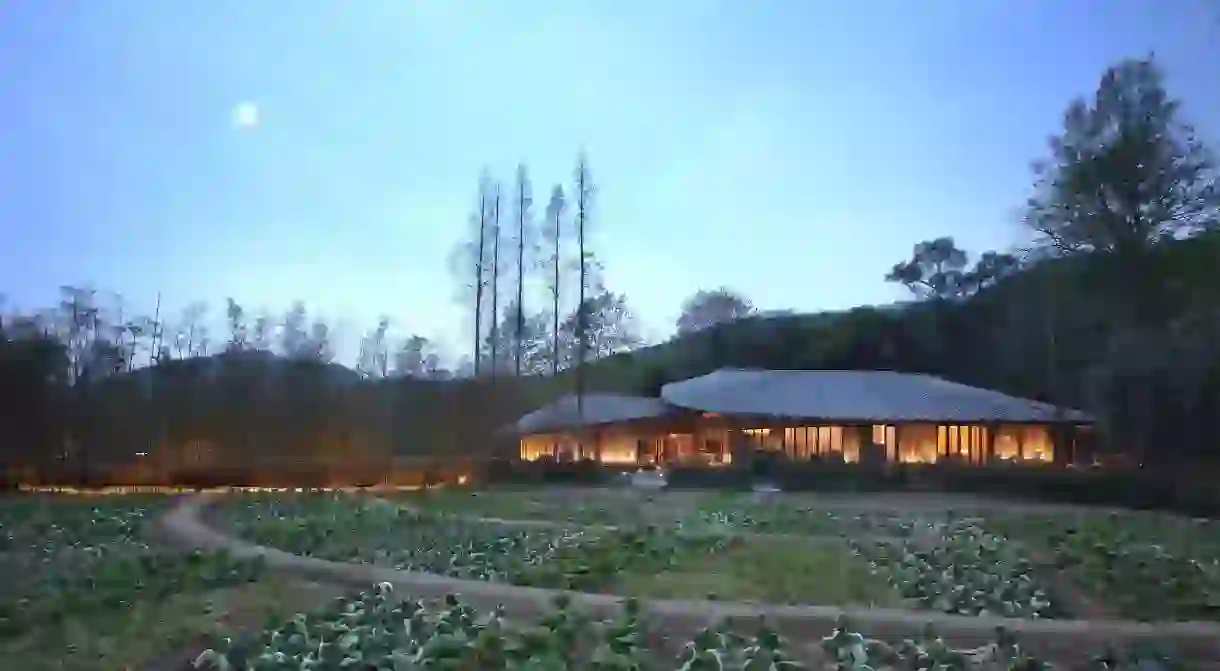The Venice Biennale's Chinese Pavilion Examines the Fragility of Its Countryside

While China’s overcrowded megacities often make the headlines, this year’s Chinese pavilion at Venice Biennale 2018 focuses on the fate of its rural development in its exhibition Building a Future Countryside.
China’s countryside is rapidly becoming dominated by frenzied architectural experimentation and growth as people are ditching the country’s megalopolises in a wave of reverse migration. The exhibition curated by Li Xiangning examines how sustainable, responsible and sensitive architecture is the way forward when it comes to maintaining China’s deep-rooted traditions while also fulfilling the needs of contemporary society.

The showstopper is the Cloud Village, designed by Philip F. Yuan of the Shanghai Digital Fabrication Engineering Technology Center, which has been installed in addition to the national exhibition at the Venetian Arsenale. Constructed out of recycled plastic, the 3D-printed outdoor pavilion explores materiality in a bid to demonstrate the possibilities of new technologies when it comes to improving China’s rural areas and creating new sustainable buildings and communities.

Cloud Village is also an ‘abstract representation of everyday life in the countryside’, according to Yuan, where a series of twisting open and semi-enclosed spaces sit under one roof, representing the blurred boundaries between private and public realms in rural areas.
Inside the exhibition at the Venetian Arsenale, Xiangning showcases a number of projects by native new-generation architects that have delivered sensitive and contextual architecture that considers the importance of rural life and its deep-rooted traditions.

‘The motivation for this exhibition is more than just xiangchou, a Chinese term that refers to nostalgia for rural lands. We return to the countryside where Chinese culture originated to recover forgotten values and overlooked possibilities; from there, we will build a future countryside,’ explains Xiangning.
Notable exhibits include a viewing tower in Yunnan province that was constructed from the remains of a demolished home and shipped over to Venice especially for this year’s biennale. The elegant In Bamboo roof structure, also by Yuan, mixes futuristic digital modelling with traditional craftsmanship. In addition, a bamboo raft factory in Fujian by Trace Architecture Office was designed using only the most basic elements – a restrained yet beautiful blend of bamboo and concrete blocks.

Another key project is Rural Urban Framework’s housing in Sichuan province, which is a sensitive response to earthquake reconstruction. The practice has provided a socially and environmentally sustainable model that can be recreated in the villages surrounding Jintai, one of the hardest hit areas by the 2008 Wenchuan Earthquake. Comprising 22 houses made using local materials, the green-stepped roofs support household farming, while family-owned workshops on the ground floor provide an essential resource for income. ‘The design of the village preserves the ideal of the common good, and proposes a rethinking of the modern rural landscape,’ explains the architecture practice.

Each of the projects showcased at the Chinese pavilion were chosen to meet the biennale’s overarching theme of ‘Freespace’, which ‘encourages reviewing ways of thinking, new ways of seeing the world, of inventing solutions where architecture provides for the wellbeing and dignity of each citizen of this fragile planet,’ according to its curators, Yvonne Farrell and Shelley McNamara.

Open until 25 November 2018, the pavilions are located in the two main biennale venues of the Venetian Arsenale and Giardini. Find out everything you need to know about attending the event here.













